“This is the nightmare I live with.”
This is how today’s protagonist described the haunting memories of his experience at the Auschwitz-Birkenau extermination camp, fifty years after the events of World War 2.
But this man was a doctor, not a gaunt prisoner or harrowed survivor. He was, in fact, an SS medical officer — one of the many Nazi doctors who worked within the industry of death that the concentration camps served as the backbone of.
But unlike many of his more infamous peers, this man went down in history as a good doctor, a good man, who did his best to save human lives, or at minimum, to preserve a sliver of dignity for the camps’ prisoners.
His name was Hans Wilhelm Münch, also known as “The Good Man of Auschwitz.”
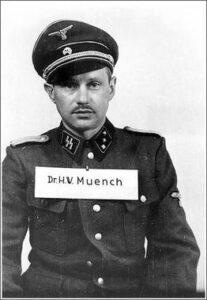
A Reluctant Party Member
Hans Münch was born on May 14, 1911, in Freiburg im Breisgau, Baden, then part of the Second German Reich. His parents were Ernst and Mathilde, née Zahn.
Hans inherited from Ernst an interest in science, and after graduating from high school, he took up medicine, studying at the universities of Münich and Tübingen.
By 1933, Hitler and the Nazi Party were in power and gradually exerting influence over every aspect of life. As Hans progressed in his medical studies, he considered gaining formal Party membership, as a prerequisite to have and keep any future job.
In later interviews, Hans Münch stated that he tolerated Nazi ideology, but never actively supported it. He was somewhat enthused by the patriotic rhetoric, and he recognised that the German economy and the welfare of the middle classes had improved since the Nazis took power. His family was even less enthusiastic about National Socialism; his father Ernst was completely indifferent, while mum Mathilde was strongly opposed.
As per the antisemitic stance of the Party … well, the entire family detested it, wholeheartedly. But, to Hans’ own admission, they never took it seriously. To the future Dr. Münch, the antisemitic propaganda was little more than empty words and bombast. He could never believe that Nazis would actually take violent, systematic action against German Jews.
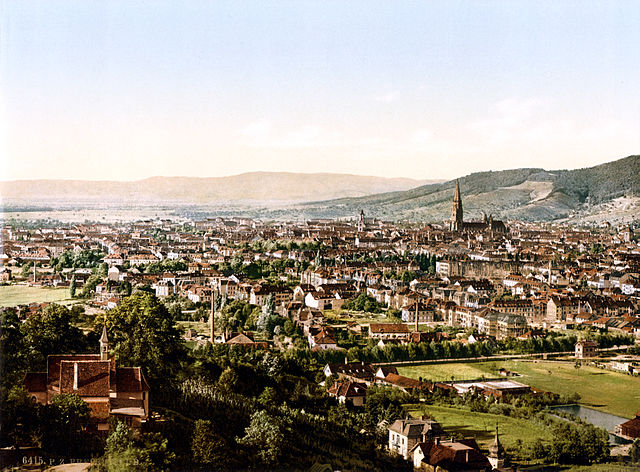
For these reasons, in 1934, Hans joined without much conviction two Nazi youth organisations: the National Socialist Mechanized Corps and the National Socialist Union of Students.
It wasn’t until May of 1937 that Hans became a card-carrying member of the Party, and even then, it happened almost by chance.
As Hans completed his studies, he entered a scientific competition to find a local alternative to Agar-Agar, an imported substance derived from red algae. At the time, it was used in labs as a culture medium to study bacteria.
Hans won the competition. His entry into the contest – a few lines describing the new substance – was accepted as a dissertation thesis! Moreover, he received further praise and recognition from the Party itself. While completing his medical internship he was given a leadership position in a bacteriological department, supervising scientific teams producing the new culture medium.
In exchange, though, he had to join the Nazi Party.
As Münch later declared, he had run out of reasons not to join.
An Eager Volunteer
On September 1, 1939, the long, dark night of Europe began, as German troops crossed the border with Poland. Many doctors had been drafted into the armed forces. But as Hans became Dr. Münch, he was labelled ‘indispensable’: he was not drafted, and military authorities asked him to stay in Germany, to replace other physicians who had been sent to the front.
During the early months of World War 2, Dr. Münch was in a small countryside hospital in Bavaria, acting as replacement for an absent medical officer. While stationed there, he met and married his wife, also a fellow doctor.
Against her wishes, in early 1941, Hans volunteered to join the armed forces.
His motivation lay in patriotism, as well as feelings of guilt. He, a young man, had a comfortable position in a countryside hospital, while older doctors were dying on the front line. Hans was still ‘indispensable’ and his application was rejected.
He then tried to seek help from his sister, a secretary at the office of the General Staff. She arranged a series of meetings with various officers and ministry officials, but with little result. Dr. Munch remained stuck in Bavaria, until one day in Munich, he ran into an old school friend, Dr. Strassburger.
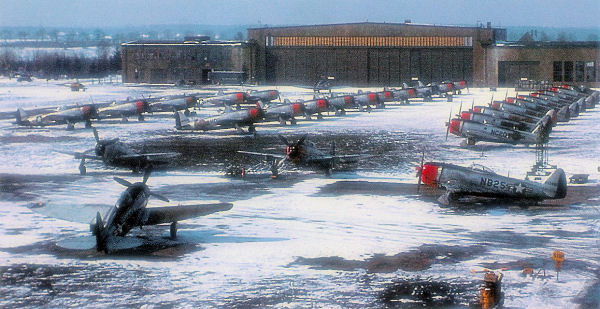
Strassburger told Hans that he was doing well, as he had secured a non-specified job with the Government. When Münch told him about his difficulty in joining the military, the old friend advised that he volunteer for the Waffen-SS, rather than the regular army.
Strassburger was an SS Officer himself, and was actually part of the staff of Reinhard Heydrich, the SS second-in-command.
Münch was delighted about the encounter. The Waffen-SS were the ‘fighting’ unit of the organization. Joining them would mean helping fellow troops at the front — in other words, he could fulfill his duty at a patriotic German. At that time, he did not suspect – or at least, he claimed he did not suspect – that the Waffen-SS could also be involved in the administration of the concentration camps.
Moreover, Münch had little knowledge of the camps – or, again, so he claimed. He admitted that he knew about Dachau and other camps in Northern Germany, but he was allegedly unaware of the extent of the atrocities being perpetrated.
When his application was accepted, Münch was told he would initially be posted near Krakow, Poland.
After completing his SS Officer training in June of 1943, the Nazis kept their promise — Dr. Hans Münch was posted to the Hygiene Institute of the Waffen-SS in Raisko, near Krakow.
This Institute performed all hygienic and bacteriological laboratory work for local SS, Wehrmacht, and police units. Its lab analyzed samples of blood and other fluids to detect cases of typhus, malaria and syphilis. It also managed growth cultures for a variety of bacteria, in order to develop antibiotic treatments and vaccines.
Because of his experience with bacterial cultures, this was a logical assignment for Dr. Münch. He realized that the Hygiene Institute was assigned regular shipments of beef, to be used in the bacterial cultures. The meat, however, was often seized by SS Officers and soldiers for culinary purposes.
The lab technicians had to make do with other materials to replace the confiscated beef. Typically, it was human flesh, coming from the corpses of prisoners. Resistance fighters, dissidents, homosexuals, religious minorities, Roma, Sinti, Jews.
In other words: Undesirables. Whose dead bodies could be provided in industrial quantities, by a structure located some 4 km from Rajsko, in a place called Oświęcim.
It’s better known by its German name: Auschwitz.
Humanity Out of Place
The Rajsko laboratory was one of many satellite facilities of the larger Auschwitz-Birkenau complex, which were dedicated to medical, chemical, and pharmacological work. The Hygiene Institute’s main task was to control outbreaks of infectious diseases at the camp, as well as to trial new medicines.
Other facilities and medical teams were purposefully dedicated to dangerous, unethical experimentation on human subjects. The most infamous case is that of Angel of Death Dr. Josef Mengele, whose biography we have already covered. Mengele was particularly notorious for his trials on identical twins, the so-called ‘perfect specimens.’ One could serve as a control subject, while the other endured the experiments.
Such was the environment that welcomed Dr. Hans Münch: a decent man with little interest in Nazi ideology, and with no ambitions of advancing his own career at the expense of unwilling test subjects.
Münch later stated that after visiting the main camp for the first time with his wife, both were shocked. His wife refused to take lodgings in Rajsko and returned to Germany.
Could Hans have done the same? In a later interview, he claimed that SS officers and soldiers did not have a choice to leave Auschwitz once they had been assigned to it. This was disputed by the interviewer, Dagmar Ostermann: as an Auschwitz prisoner, she was forcibly drafted as clerical helper in an administrative office within the camp. There, she processed several requests of SS personnel who would rather go to the front than serve at Auschwitz.
So, if he had the chance to leave, why did he stay at Auschwitz?
Dr Münch claimed that after his initial months at the institute, co-workers and prisoners themselves asked him NOT to leave, as he was needed there.
Why did they need them there?
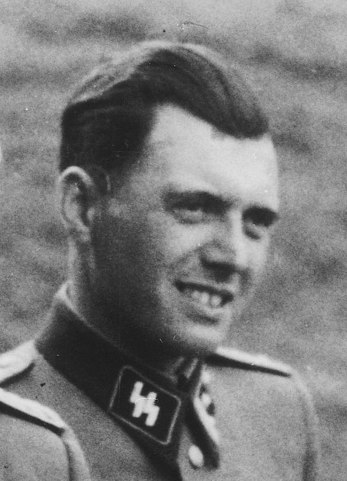
Because very early on, Dr. Münch behaved like one of the only real human beings on the German side of the camp — like a real doctor, more loyal to the Hippocratic Oath than the Third Reich.
The Hygienic Institute was staffed by some 100 prisoners, mostly Jewish and Polish, with previous experience in medicine and lab research. They worked at Raisko essentially as skilled slave skilled labour, under Münch’s direct supervision.
As they joined the institute, these workers would be marched in and mistreated by SS guards. Münch was the only one who took time to meet each one in person, shaking their hands and welcoming them to the institute. This simple act of civility put him under the spotlight of his superiors.
“Someone nudged me that my behaviour was unacceptable”
One prisoner, Dr. Louis Micheels, who worked with him daily, described Munch as “friendly — (he) showed personal interest in people, never humiliated anyone. He seemed oddly out of place.”
Block 10
Looking after the staff at Rajsko was one of the reasons for Münch to stay.
The other was related to the infamous Block 10.
This was a ward where the Chief Medical Officer at Auschwitz, Dr. Eduard Wirths, studied new diagnostic methods for cervical cancer.
Useful research, but carried out on subjects without their informed consent.
Since April 1, 1943, Block 10 was also the theatre of sterilization experiments. Here, Dr. Carl Clauberg sought a method for sterilizing unsuspecting women. He devised a technique of injecting a caustic substance into a patient’s uterus over the course of what she thought would be an ordinary gynecological examination.
A camp survivor described these experiments:
“A white substance was then injected into … my uterus. The syringe was about 30 cm long.
Such injections were done to me three times with breaks of 3 or 4 months. After each injection, I had a terrible burning sensation in my abdomen”
Dr. Clauberg was assisted by a nurse: Sylvia F, a Jewish prisoner from Slovakia. Dr Münch, who worked occasionally in Block 10, described her as being about 20 years old, tall, and very beautiful. More importantly, she was ‘Clauberg’s right hand and demanded absolute respect’ as she selected which women would be sent to the gas chambers at Birkenau.
When Clauberg was moved to another post, some 25 young women were still in Block 10: their function was now to provide saliva samples to the Hygiene Institute in Rajsko.
But eventually, Münch’s superiors asked him to terminate the collection of saliva. As innocuous as it sounded, the cessation of saliva samples was a death sentence for those women. Now that they were not involved in experiments any longer, they were going to be gassed.
Dr Münch could not accept that.
During a sleepless night, he devised a plan. He concocted a new experiment, requiring those women as participants: a clinical trial to assess the efficacy of a new vaccine against granuloma, an infection of the gums. The project was approved, and he was able to save the young women of Block 10.
He warned them
“You must tell everyone that these experiments are very painful and disagreeable so that the headquarters people do not get wind of anything”.
This was one of many instances in which Münch designed new harmless trials, or extended pre-existing experiments, to ensure test subjects were not marched to the infamous showers of the camp.
He found ways to help prisoners also in more direct ways. As official court documents later stated, “he was helpful in the frame of his possibilities and even risking his own safety”
For example, Dr Münch helped women prisoners meet their husbands in secret. He succeeded in exempting at least two inmates from the punishment battalion. And he ensured the transfer away from Raisko of a SS guard, against whom the prisoners had complained.
Prisoner and colleague Dr. Micheels became very ill with appendicitis in the summer of 1944. Münch visited him frequently as he was convalescing, ensuring that Micheels had a full recovery.
After five weeks, Dr. Micheels returned to the Institute, but was very weak due to a lack of food.
On his first day back, Münch approached him and, with great secrecy, pulled something out of his pocket. It was an item he had smuggled to help Micheels with his recovery: A nice sausage!
Münch ordered Micheels to eat and have some rest, intervening when an SS guard grumbled that the prisoner was not on duty.
Later that summer, in 1944, Dr Münch was required to expand his normal duties.
Auschwitz had just received a great influx of Jewish prisoners from Hungary. It was then that all medical personnel on site were drafted to take part in the infamous ‘selection’ process, colloquially known as ‘ramp duty’.
This is when doctors examined prisoners as they stepped off the transport trains and decided who would work, who would be used in experiments, and who would be sent directly to the gas chambers.
The Chief Medical Officer at Auschwitz, Eduard Wirth, insisted that all doctors participated in ‘ramp duty’. But Dr Münch would not participate in this arbitrary selection — a thinly disguised power trip, presiding over the life and death of thousands of innocent men, women, and children.
Dr Wirth may have had authority over doctors at Auschwitz, but Münch formally reported to Paul Reichel, the head of all Hygienic Institutes, headquartered in Berlin. Münch contacted him and told him, “I cannot do it. I will not do it, regardless of the consequences.”
His boss understood. After pulling some strings with the camp commander, he had Münch exempted from the selection process. More importantly, there were no direct consequences, proving again that inside of Auschwitz, an SS officer was the only person who was ever treated with any shred of respect or humanity.
Trial in Krakow
In January of 1945, SS authorities began the evacuation of Auschwitz, as the Red Army pressed closer from the East. All the Jewish prisoners working at Raisko received the news that they would be transferred to an unknown destination. The lab workers were reluctant, suspecting they would be sent on a death march.
Headed by Dr. Micheels, they decided to talk to Münch.
He shared their concerns, and even suggested helping them in a daring escape attempt. He would procure SS uniforms and walk them through the gates of Auschwitz, to freedom.
Eventually, they agreed it was safer to join the transport column, then escape toward the Swiss Alps.
Dr. Micheels survived the late stages of the war, and wrote about his last goodbye with Dr Münch:
“To prove his goodwill, he gave us a revolver and ammunition, in case we had to shoot our way out. He shook hands with each of us and wished us early freedom. That was the last I saw of him.”
Dr. Münch was also evacuated. He spent two months in Dachau and then returned home in Bavaria, but he was unable to hide the fact that he had been a doctor in Auschwitz. Hans was eventually arrested by the Allied occupation authorities and interned in an American PoW camp.
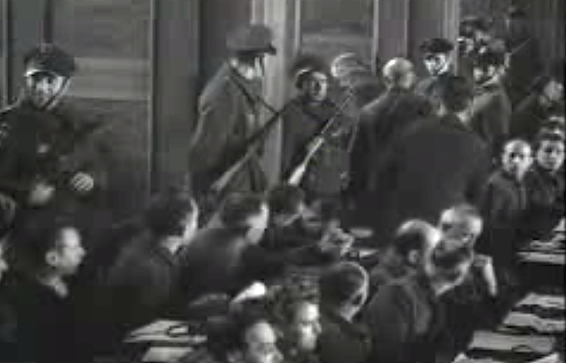
From there, he was transferred to Krakow in 1946. He was to sit on the bench of the accused at the First Auschwitz Trial.
From November 24 to December 22, 1947, forty-two former staff from the concentration camp were put on trial.
Twenty-three of the defendants were sentenced to death. Twenty-one of them were hanged on January 28, 1948. Two had their sentences commuted to life imprisonment.
Eighteen defendants were found guilty and sentenced to various terms in prison.
Only one out of all of them was acquitted and released: Dr Hans Münch, the righteous doctor, the good man of Auschwitz.
During the trial, the main charge against him was that he had injected prisoners with malaria-infected blood. It was alleged he had also caused rheumatic fever by injecting an unknown agent into his human guinea pigs.
But many former prisoners came out in support of Münch. Dr Louis Micheels and other surviving Jews sent their testimonies to Münch’s former boss, Paul Reichel.
The Krakow court acknowledged how Münch had refused to carry out the selection process and how he had helped prisoners with bogus experiments. It emerged that he had never inoculated malaria, and that his injections were intended to treat rheumatism, rather than cause it.
On the 22nd of December, the court acquitted Dr Hans Münch with the following motivation:
“Not only because he did not commit any crime of harm against the camp prisoners, but because he had a benevolent attitude toward them and helped them … He did this independently from the nationality, race, and religious origin and political conviction of the prisoners.”
Life as a Witness
After the trial, Münch returned to Germany and began working as a practicing doctor in Rosshaupten, Bavaria.
For many years, neither Münch nor his wife spoke to their children about his experience in Auschwitz. All they knew was that he had been on trial, but that he had been acquitted.
His son Dirk later declared, “I think my father was somewhat paralyzed. He could not talk very much to his children about what he saw and felt.”
In the decades after the end of the War, Dr Münch became a much sought-after witness and expert. His opinion was consulted by prosecutors, journalists, and survivors to shed light on the atrocities perpetrated at Auschwitz.
For example: in 1955, Dr. Carl Clauberg, the torturer of Block 10, returned to West Germany. Right after the war, he had been arrested by the Soviets and kept in captivity for a decade.
Upon his return, he made several public statements about the medical importance of his work at Auschwitz. Survivors of Block 10 and their families immediately petitioned for Clauberg to be tried. In June of 1956, Dr. Münch was then approached by prosecutors, and he volunteered his testimony, providing valuable details about the activities of Clauberg and his right-hand woman, nurse Lisa F.
Some years later, Münch was summoned to the Second Auschwitz Trial – this time as a key witness. This second trial was held in Frankfurt from December 10, 1963 to August 10, 1965.
Twenty-two former SS officers and guards were indicted for their complicity in war crimes. Thanks to Münch’s testimony, eighteen were found guilty and sentenced to various terms of imprisonment.
During the early 1980s, Dr. Münch participated in two documentary films produced for German TV. The directors of one of them, Bernhard Frankfurter, later arranged for the doctor to meet with a camp survivor, Dagmar Ostermann, whom we already quoted.
Dagmar interviewed Hans at length, in April of 1988. The transcript was later published in a book titled, “The Meeting: An Auschwitz Survivor Confronts an SS Physician”
The interview sheds light on how and why Münch eventually joined the Nazi Party and the SS. It also reveals many details on how exactly he helped the prisoners in the camp.
However, the editors of the book, Frankfurter and Susan Cernyak-Spatz — also a camp survivor — offer a different interpretation. They posit that Münch knew very well about what was going at Auschwitz, long before working there, and that he stayed at his post in Raisko out of opportunism and careerism, mitigated by sporadic acts of kindness.
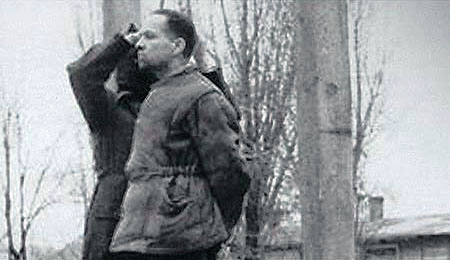
In August of 1993, Hans Münch was interviewed by another Auschwitz survivor, Eva Mozes Kor.
Eva and her twin sister Miriam had arrived at the camp in the spring of 1944, aged ten. Their parents and two older sisters were almost immediately selected to die in the gas chambers.
The twins were chosen by Dr. Mengele to be among his test subjects.
When the Soviets liberated Auschwitz on January 27, 1945, only 200 out of 3000 ‘Mengele twins’ had survived. Eva and Miriam were among the lucky few.
When Miriam died in early 1993, Eva opened in her memory the CANDLES Museum in Terre Haute, Indiana. ‘CANDLES’ stands for
“Children of Auschwitz Nazi Deadly Lab Experiments Survivors”
While organising a conference on Nazi medicine, Eva decided to contact Dr Münch.
She wanted to know more about Dr. Mengele, but Hans could not give much insight. He knew him, but he had not worked alongside him.
Eva then questioned him about the operation of the gas chambers. He replied, “This is the nightmare I live with. I had to watch the operation of the gas chambers, and then, when the bodies were dead, I had to sign the death certificates.”
Münch provided detailed descriptions on how the pellets of colourless, odourless Zyklon B gas were dropped through the air vents in the mock showers.
This was a precious testimony, one that would finally shut the trap of those few remaining morons who denied the existence of the gas chambers. Or, even worse, deny that the Shoah and the extermination of other ‘undesirables’ ever took place.
Two years later, Münch and Eva joined forces again for a special event.
It was the January 27, 1995, the 50th Anniversary of the liberation of Auschwitz. On Eva’s invitation, Dr. Münch joined for the televised commemoration, during which Eva read two documents they had authored and signed.
The first one was a declaration by Dr Münch, in which he attested the existence of the gas chambers.
“I saw thousands of people gassed here at Auschwitz. Children, old people, the sick, and those unable to work were sent to the gas chambers. These were innocent human beings: Jews, Gypsies, Homosexuals, Hitler’s political opponents…anyone who did not fit Hitler’s idea of a pure Aryan race.
I am signing this paper of my own free will to help document the cruel intolerance of my fellow SS.
I, a former SS Physician, witnessed the dropping of Zyklon B into simulated exhaust vents from outside the gas chambers. … After three to five minutes, death could be certified …
This is the nightmare I continue to live with fifty years later.”
Eva’s document was equally powerful. In her declaration, she had decided to forgive the torturer and executioners at Auschwitz, even Dr Mengele.
“I, Eva Mozes Kor, in my name only, give this amnesty because it is time to go on; it is time to heal our souls; it is time to forgive, but never forget”.
Never Forget
Never forget – that was the main message carried by Hans, Eva, and others who had decided to document the darkness of concentration camps.
Individual memories are the greatest weapon against the return of such darkness.
But the memory of an individual can be fickle, and unreliable.
Especially in old age, when the ravages of dementia and Alzheimer’s disease can wipe clean the slate of one’s memory, or distort it, changing the perception of the present and interpretation of the past.
Sadly, this is what happened during the final act of Dr. Hans Münch’s life.
In November of 1998, he was interviewed by German magazine Der Spiegel, after a viewing of Steven Spielberg’s Schindler’s List. Dr Münch was a household name, and widely known as ‘The Good man from Auschwitz’.
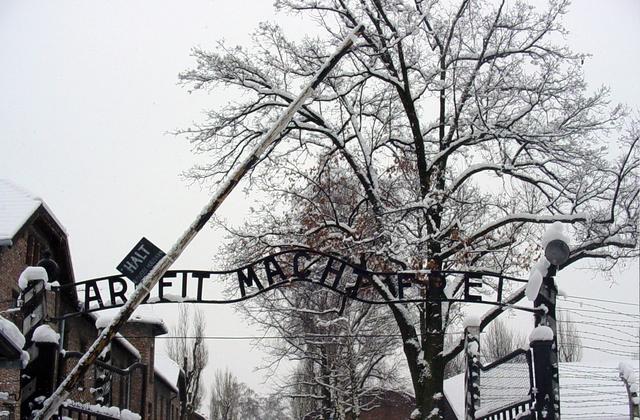
And yet, during the interview, he made several shocking, disparaging, hateful comments about the Jewish people, and he even praised Dr. Mengele’s work.
“Mengele and the others sent us their material; heads, livers, spinal fluid, whatever came up”
Münch claimed it was thanks to this provision of organic material that he could perform experiments in ideal conditions. He even mentioned intentionally infecting prisoners with malaria.
The interview was followed by another media appearance, in a French radio station. During the broadcast, Münch stated that Roma and Sinti prisoners at Auschwitz were pathetic and that the gas chambers were the right solution to get rid of them.
Both his son and daughter were aghast at these comments. They revealed to the media that their father had been suffering from Alzheimer’s disease for a while now. He had almost completely lost his short-term memory and lived in a state of mental confusion.
This is the explanation on which most media outlets agreed upon. After all, his conduct at Auschwitz had been clearly documented at the first trial, shortly after the war. Many witness accounts from prisoners had exonerated him from atrocities, especially infecting prisoners with deadly diseases.
Münch’s declarations nonetheless sparked two court proceedings in France and Germany, on counts of instigating racial hatred and supporting Nazi ideology.
In the case of the French trial, in 2001, Hans Münch was convicted in absentia, although a medical commission recognized him as being severely psychologically disturbed.
The verdict never reached him. Dr. Hans Münch, then 90 years old, had passed away in his family home in Allgau, Bavaria.
I will not ask you if you enjoyed today’s video, but I do hope that the story of Hans has inspired you to study and keep alive the memory of what happened in the extermination camps.
Another Auschwitz survivor, author Primo Levi warned us that: “It happened, therefore it can happen again: this is the core of what we have to say. It can happen, and it can happen everywhere.”
General info
https://www.jewishvirtuallibrary.org/hans-m-uuml-nch
https://www.warhistoryonline.com/instant-articles/hans-wilhelm-munch-doctor-ss.html
Block 10 And Carl Clauberg
https://www.jewishvirtuallibrary.org/carl-clauberg
Josef Mengele
https://www.jewishvirtuallibrary.org/josef-mengele
The Hygiene Institute
http://auschwitz.org/en/museum/archives/collection/
The Auschwitz Trials
https://www.jewishvirtuallibrary.org/the-auschwitz-trials
Trial, charges and verdict
https://www.jewishvirtuallibrary.org/charges-against-hans-m-uuml-nch
Interview with B Frankfurter and D Ostermann
https://books.google.com/books/about/The_Meeting.html?id=7AiY1QFhJygC
The Auschwitz declaration
http://nizkor.com/hweb/people/m/muench-hans/auschwitz-declaration.html
Eva Mozes Kor
https://candlesholocaustmuseum.org/eva-kor/her-story/her-story.html
https://www.bbc.co.uk/ideas/videos/the-holocaust-twin-who-forgave-the-nazis/p0837wjy
https://www.timesofisrael.com/survivor-who-embraced-ex-nazi-guard-decries-prison-sentence/
Retraction and dementia in old age
http://www.fpp.co.uk/Auschwitz/docs/controversies/liars/Muench1.html
https://www.independent.co.uk/news/is-dr-munch-a-confused-old-man-or-a-defiant-nazi-1183628.html
https://www.spiegel.de/spiegel/print/d-10932952.html
https://link.springer.com/chapter/10.1007/978-1-349-66019-3_47
Further reading: Reports of Trials of Nazi War Criminals
https://www.loc.gov/rr/frd/Military_Law/pdf/Law-Reports_Vol-7.pdf



